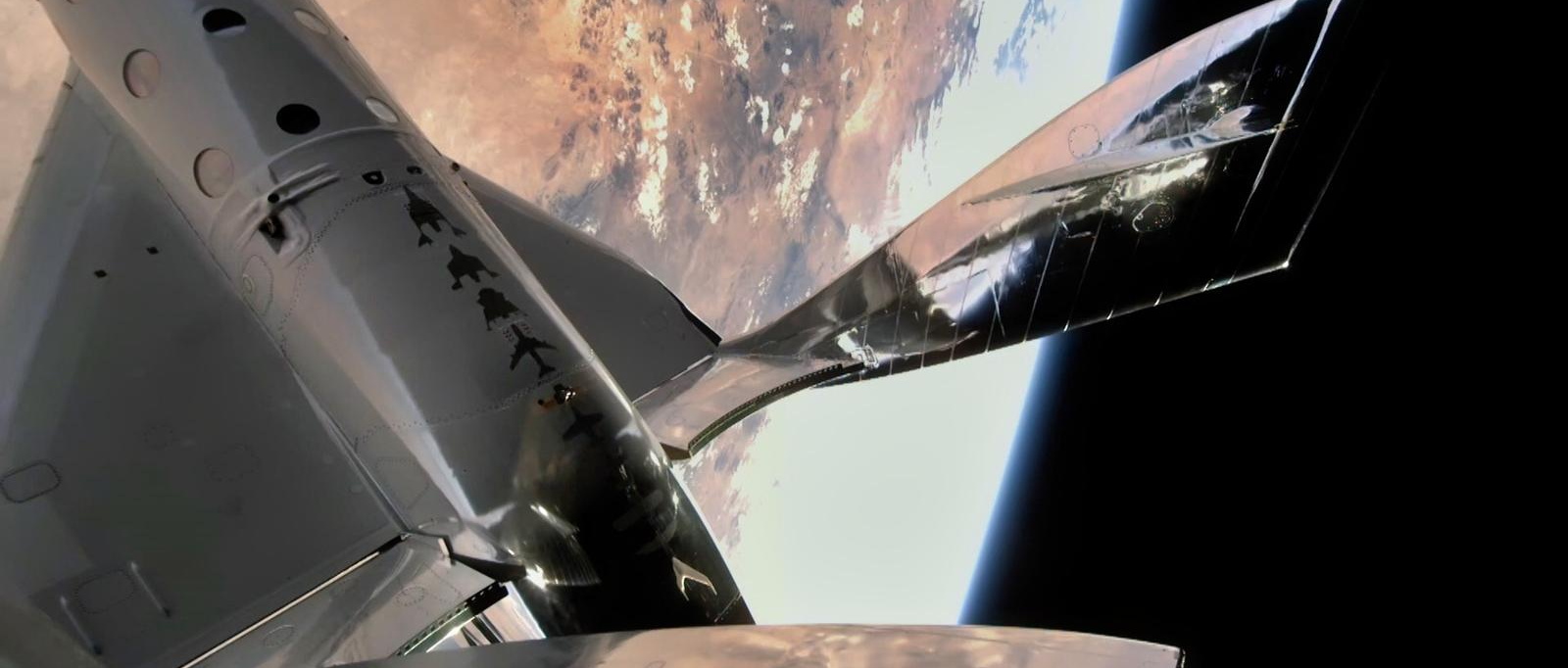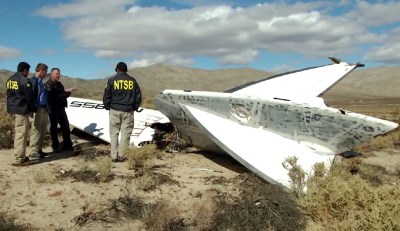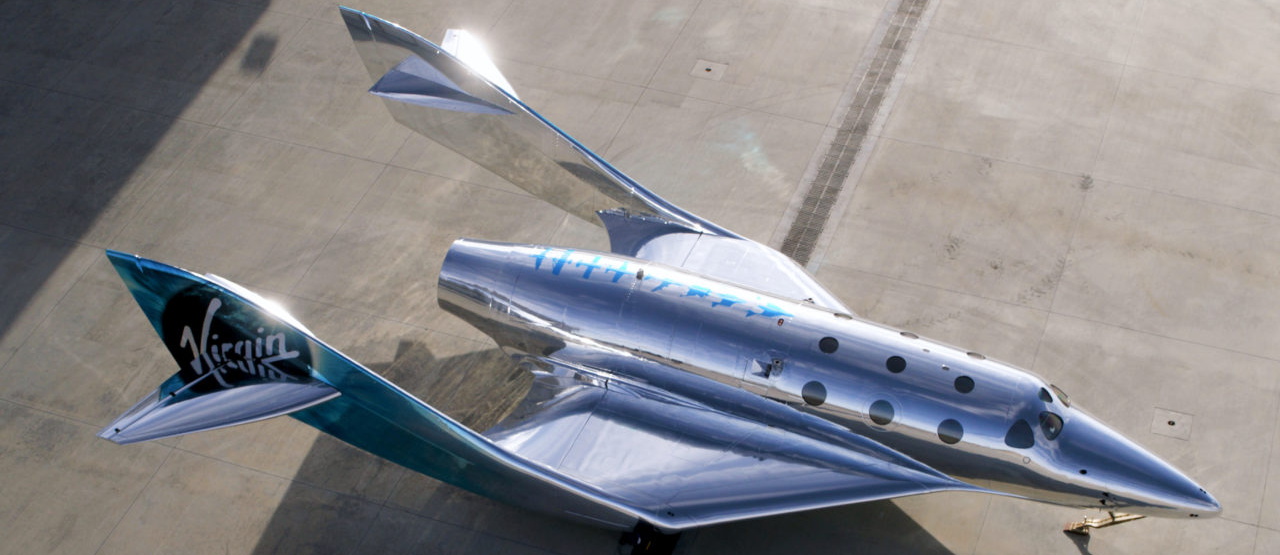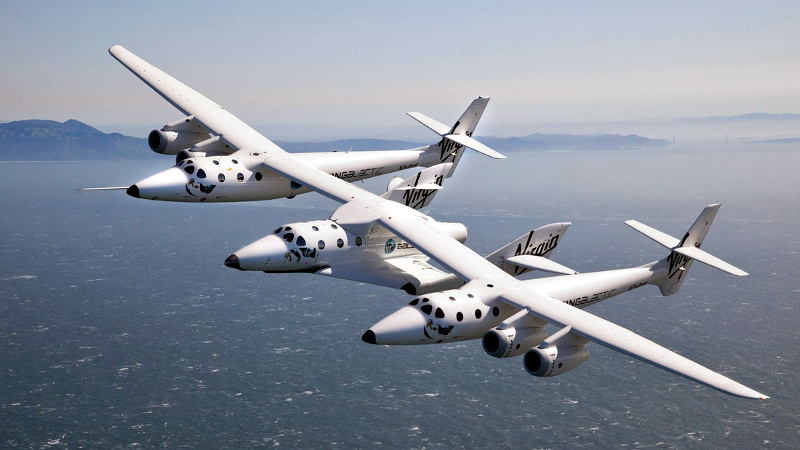To hear founder Richard Branson tell it, the first operational flight of Virgin Galactic’s SpaceShipTwo has been 18 months out since at least 2008. But a series of delays, technical glitches, and several tragic accidents have continually pushed the date back to the point that many have wondered if it will ever happen at all. The company’s glacial pace has only been made more obvious when compared with their rivals in the commercial spaceflight field such as SpaceX and Blue Origin, which have made incredible leaps in bounds in the last decade.

But now, at long last, it seems like Branson’s suborbital spaceplane might finally start generating some income for the fledgling company. Their recent successful test flight, while technically the company’s third to reach space, represents an important milestone on the road to commercial service. Not only did it prove that changes made to Virgin Space Ship (VSS) Unity in response to issues identified during last year’s aborted flight were successful, but it was the first full duration mission to fly from Spaceport America, the company’s new operational base in New Mexico.
The data collected from this flight, which took pilots Frederick “CJ” Sturckow and Dave Mackay to an altitude of 89.23 kilometers (55.45 miles), will be thoroughly reviewed by the Federal Aviation Administration as part of the process to get the vehicle licensed for commercial service. The next flight will have four Virgin Galactic employees join the pilots, to test the craft’s performance when loaded with passengers. Finally, Branson himself will ride to the edge of space on Unity’s final test flight as a public demonstration of his faith in the vehicle.
If all goes according to plan, the whole process should be wrapped up before the end of the year. At that point, between the government contracts Virgin Galactic has secured for testing equipment and training astronauts in a weightless environment, and the backlog of more than 600 paying passengers, the company should be bringing in millions of dollars in revenue with each flight.
A Promising Predecessor
There’s no question that aerospace engineering is difficult and exacting work, doubly so when your destination is the vacuum of space. But even still, it was assumed that Virgin Galactic was going to have a leg up on its competitors thanks to the fact that the SpaceShipTwo spaceplane and its carrier aircraft were direct followups to the vehicles that which won the Ansari X Prize in 2004.

The SpaceShipTwo is roughly twice the size of the three passenger SpaceShipOne, and features a sleeker design reminiscent of a futuristic private jet, but otherwise the two craft are remarkably similar. Both are air launched from their purpose-built “motherships”, and accelerate to roughly Mach 3 under the power of a hybrid rocket engine that burns a solid fuel combined with nitrous oxide for approximately 70 seconds during a near-vertical ascent. Lacking the necessary velocity to achieve orbit, the craft coast their way through a suborbital ballistic trajectory with an apogee of at least 80 km (50 miles), during which passengers experience around four minutes of microgravity.
The flight profile up to this point is not unlike that of the North American X-15 from the 1960s, albeit with a considerably slower maximum speed. But now comes the tricky part, atmospheric reentry. Even at the relatively low velocities of a suborbital flight, it’s a dangerous operation that can go catastrophically wrong. This risk is why Burt Rutan gave SpaceShipOne a secret weapon: the so-called “feathered configuration”, in which the rear half of the vehicle folds upwards. This creates a high-drag, aerodynamically stable layout that has often been compared to a shuttlecock and essentially makes reentry an automatic process. The increased drag keeps the speed low, while the folded shape ensures the craft maintains the appropriate attitude. After slowing to subsonic speeds, the wings fold back down and the craft glides to a runway landing like the Space Shuttle.

The elegant simplicity of the feathered reentry is arguably what allowed SpaceShipOne to win the Ansari X Prize, and its inherent reliability makes it well suited to commercial spaceflight. It’s little wonder that scaling up the proven design of the SpaceShipOne was seen as a fast track to developing a practical spaceplane for suborbital space tourism. So what happened?
Engine Trouble
Tragedy first struck the development of SpaceShipTwo before the craft had even been publicly unveiled. In 2007, while testing the new oxidizer system required by the vehicle’s larger and more powerful engine, a tank pressurized with 4,500 kg (9,900 lb) of nitrous oxide exploded and killed three employees of Burt Rutan’s Scaled Composites.
The hybrid rocket engine design would continue to give the team problems for years, though thankfully without further loss of life. It originally burned the same solid hydroxyl-terminated polybutadiene (HTPB) and nitrous oxide mixture as the original 88 kN (20,000 pound) thrust engine used on SpaceShipOne, but this combination was found to be unstable during long burns. Despite making several flights using this engine, in 2014 Virgin Galactic announced they were developing a new engine would burn a different fuel. This required helium and methane tanks to be added into SpaceShipTwo’s wings, a considerable modification that the original design simply didn’t account for.

After experimenting with different fuels and engine revisions, Virgin Galactic eventually returned to using HTPB as a fuel. The new engine, which was built in-house rather than through a subcontractor, is reportedly capable of generating 310 kN (70,000 pounds) of thrust, and is fully reusable. Unfortunately, the years spent on engine development difficulties would pale in comparison to what came next.
Ad Astra Per Aspera
During a test flight on October 31st, 2014, VSS Enterprise broke up over the Mojave Desert just seconds after engine ignition at an altitude of approximately 15 km (50,000 feet). While seriously injured, pilot Peter Siebold was able to parachute to safety and survived. Unfortunately, copilot Michael Alsbury was killed in the crash.

As this was the first in-flight test of a new fuel mixture, early theories from industry insiders placed blame on the engine. But this idea was quickly put to rest after the National Transportation Safety Board (NTSB), conducting its first-ever investigation into a fatal mishap aboard a spacecraft, recovered the engine and associated tanks largely intact. With the help of vehicle telemetry, cockpit recordings, and evidence from the wreckage itself, the NTSB eventually pined the loss of Enterprise on its defining feature: the feathered reentry system.
The NTSB concluded that Alsbury, potentially due to stress or confusion, unlocked the vehicle’s feathering mechanism far earlier than was indicated in the flight checklist. With the mechanical locks no longer in place, the aerodynamics of supersonic powered flight in the atmosphere overwhelmed the actuators, causing the wings to fold up on their own. Switching into this high-drag configuration while traveling at more than Mach 1 was like flying into a wall; analysis of the flight data determined that within 1.7 seconds of Alsbury unlocking the feather mechanism, Enterprise was ripped to pieces in mid-air.
Onwards and Upwards
After the fatal breakup of Enterprise, Virgin Galactic made a number of changes to the then under construction Unity. Chief among them were physical and operational measures to prevent the feather mechanism from being unlocked or deployed prematurely. The NTSB recommended more thorough crew training for emergency situations, especially in the use of the automatic parachute and supplemental oxygen systems, but ultimately deemed the design and operation of the vehicle to be satisfactory.
As of January 2020, the currently unnamed third and fourth SpaceShipTwo craft were still under construction, with the former nearing the point where final integration and ground testing could begin. Considering the wide-reaching impact of the COVID-19 pandemic, it’s likely that work on these craft was considerably slowed since then. As such, assuming commercial operations begin in 2022, the primary bottleneck will be the amount of time it takes to turn Unity around between flights.
To that end, Virgin Galactic announced in March that they’re simultaneously working on a new class of vehicle known as SpaceShip III. Outwardly very similar to SpaceShipTwo, the next-generation VSS Imagine and VSS Inspire are designed with modularity and ease of maintenance in mind. With a reduced turnaround time between flights and a fleet of at least five spaceplanes, the company hopes to eventually perform as many as 400 commercial flights per year from Spaceport America alone.

It’s a bold goal, but considering the company has yet to carry a single paying passenger after more than a decade of research and development, it should probably be taken with a grain of salt. That being said, if the history of Virgin Galactic has taught us anything, it’s that they certainly won’t give up without a fight.
















IMO this should NOT be called spaceflight when it’s suborbital. It does not do justice to “real” (orbital) spacecrafts and is very misleading to general public (portion of which is already dumb enough to think that Earth’s gravity turns off at 100km).
I think we have a bigger problem that we have some in the American Public who think the world is flat and lost being in touch with reality. I think we have a long road in education ahead of us.
Everybody gets their education on the internet now, which a large proportion think the earth is flat (and if more than 0% of people think the earth is flat I think that is too large a proportion!)
The definition was set in the 1950’s when just getting to 100km was seen as a different sort of problem than reaching 20km which could be done by an aircraft or stratospheric balloon, and nobody wanted to say Alan Shepard’s Freedom 7 flight wasn’t really space travel. This sentiment did start to change through after the early SS1 flights and there is rumbling that if too many tourists go on these joyrides they might start requiring a full orbit to consider you an “astronaut.”
How does it hurt anyone if more people have technically been to space?
I mean, I agree, but putting an arbitrary distinction at orbital/suborbital is similarly misleading. I’ve always appreciated the separation between small/medium/heavy/superheavy lift launch systems, and at least in my mind, “human-rated” modifies the class up by one. So, for instance, a suborbital human launch is equivalent (to me) to a small-lift launch system. If that seems arbitrary, consider that Virgin Galactic *originally* had planned on using the same carrier launch vehicle as part of a small-lift launch system. (Yes, those plans got modified, but those are separate issues).
Space isn’t a speed it’s a place. This is a flight that goes to space, so a space flight. Suborbital just means it’s a very short stay. This has all the features that I think the public associates with space. Rockets push you into your seat, there’s a period of weightlessness, you can see the curvature of the earth, there’s no air outside the windows…
I get that orbital flight is an even bigger achievement and not everyone understands that but not calling this spaceflight isn’t fair to the people who have worked and in some cases died to make it happen.
This is a good point. What would you call something that travels at 10km altitude at 7 km/s? Yes, it’s in (short lived) orbit, but is it in space?
10 km is still plane altitude: Concordes flew at 60kft.
The altitude boundary isn’t *totally* arbitrary. Balloons max out practically at about 50 km, so you need to be well above that to be in the range of “non-aerodynamically lifted objects.”
I think that’s the point. Ignoring obstructions you could technically be “orbital” just a few meters off the ground if you were going fast enough. If you define spaceflight as orbiting the earth then low altitude hypersonic flight could claim to technically be a space flight and that’s even more confusing than defining it as a somewhat arbitrary distance from the ground.
I understand not wanting the public to get the idea that what Virgin is doing is in the same league as the work being done by SpaceX or Rocket Lab but unfortunately it just comes off as gatekeeping nonsense.
“If you define spaceflight as orbiting the earth”
You’re missing the definition of “orbit” there. Yes, if you just go with the literal word definition of “going around something”, obviously. But with spacecraft it’s (relatively) easy to define: periodic motion due to gravity alone. And yes, obviously, it’s fuzzy, because the Earth’s atmosphere doesn’t disappear suddenly.
I don’t disagree with you on principle – saying “oh, it’s not spaceflight” is a bit silly. But making sure to have the “suborbital” bit there isn’t crazy as a distinction.
Agreed it is an outright fraud, and they know it. If they can’t match what Joseph A. Walker did in the North American X-15 in 1963 then they are kidding themselves. Personally I think a minimum of one orbit should be required to certify a civilian as a space traveler, and if you are not pilot or crew then you are never an astronaut.
Confusing maybe but certainly not fraud. Defining space travel by orbit is silly. If someone built a rocket large enough to take them straight out to interstellar space you would hardly say they weren’t a space traveler just because they skipped orbiting the earth.
Space is a place. If you’ve traveled to that place you are a space traveler.
You miss the point, either way you have reached escape velocity and are not just on a ballistic curve.
Only on HaD can all the comments be tied up on the definition of space, and not the actual article being presented.
> https://hackaday.com/wp-content/uploads/2021/05/virgingalactic_feat.jpg?w=800
Caption: When a mummy plane and a daddy plane get together…
I wouldn’t have anticipated this, but the idea of evolving Rutan’s SpaceShipOne has just been a bad one. Not only has it taken forever–SpaceX started Falcon 9 development only a year after SpaceShipOne flew, and they now have a mature orbital rocket and two LEO capsules to ride on it, not to mention recoverable first stages–but they haven’t demonstrated anything like a reasonable flight cadence. To my knowledge, SS2 has never even turned around as fast as SS1.
It depends on what you think of as “the idea.” As in, what exactly is the end goal? It’s obviously just for space tourism, and in that case talking about SpaceX in relation to Virgin Galactic is a bit silly – it’s just entirely different markets.
Now, if you’re saying “Rutan’s design is utterly pointless other than for PR,” you’re definitely right (space tourism *is* PR, after all). But most people realized that back at the time of the X Prize anyway.
I’m actually impressed with the vision, goals and mission of launching a spacecraft into space via an aircraft and then landing the spacecraft back on earth with potential to re-use or even repurpose the craft rather overtly.
Seems insane, though I’m guessing is still pushing the limits of science that I’m guessing can be better identified for the masses that might not be aware of… like myself and others that care to know.
On another note, I personally think either an electromagnetic or steam assisted take-off can better improve the capabilities in general.
Some years ago when the Anasari X-prize was not yet won I wondered about the difference between those big rockets full of fuel, and a beefed up aeroplane that could reach 100km, and did some back of an envelope calculations.
If I remember well, then 5% is in the potential energy to get the thing high enough to reduce air friction to a negligible extent, and the other 95 percent of the energy you need is in getting enough speed to keep the thing in orbit, and this made thew whole subject a lot less impressive to me.
This is the kind of reasoning I want to see in hackaday articles, no just rehashing press releases and youtube videos…
“The company’s glacial pace has only been made more obvious when compared with their rivals in the commercial spaceflight field such as SpaceX and Blue Origin, which have made incredible leaps in bounds in the last decade.” “Blue Origin”, “leaps and bounds”?? Really? When?
The United States government defines “space” as a place where atmosphere is too thin to allow aerodynamic control surfaces to function as such. One doesn’t have to achieve orbital velocity to be in space – just attain an altitude above 50 miles or so where atmosphere essentially no longer exists (as far as a wing is concerned). This definition of space is not an arbitrary definition, rather it is defined by well known, quantifiable, repeatable phenomena. Engineering a craft capable of piercing the lowest level of space is relatively simple and has been occurring world wide for about 70 years now. Engineering a craft capable of delivering a half dozen humans into space, over and over again, using technology that offers a commercially viable solution – well, we are about to finally see that happen.
How about those 100 km clubs nothing like a little space to get the ball a going